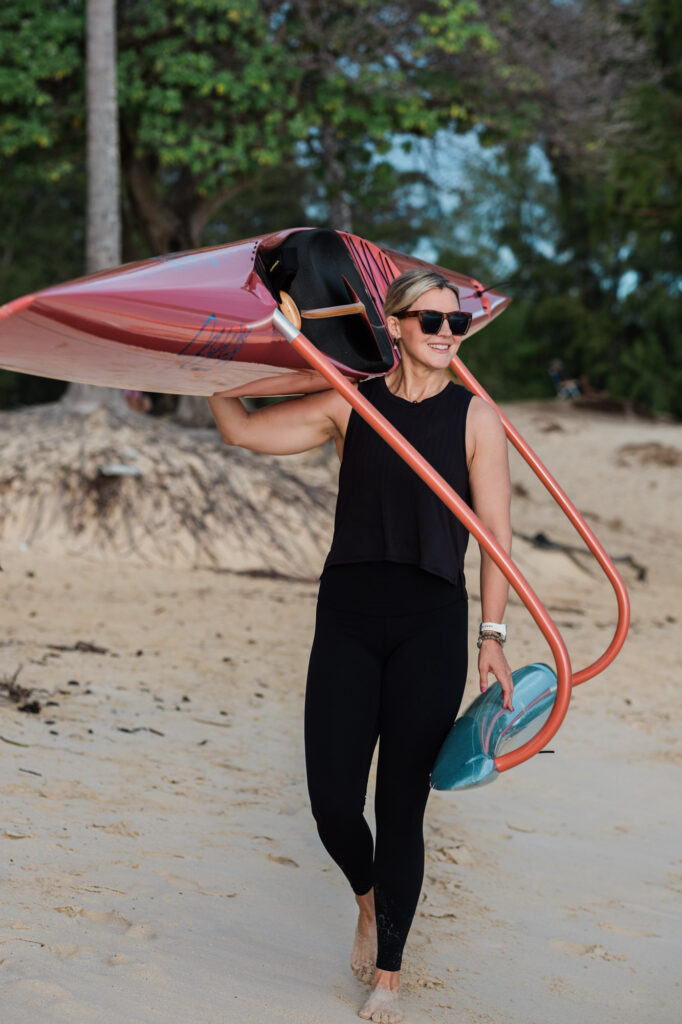Paddling Strength Training for Outrigger Canoe Performance

As a physical therapist passionate about helping athletes thrive, I often emphasize the importance of paddling strength training for outrigger paddlers. While the smooth rhythm of paddling may seem like it’s all about cardio, strength plays a vital role in performance and injury prevention.
Why Strength Matters in Outrigger Paddling
Improve Performance and Endurance
Strength training is one of the best ways to increase paddling power. When your muscles are stronger, you can push harder with each stroke. As a result, your boat moves faster and more efficiently.
Additionally, strength supports endurance. It helps you maintain technique during long sessions, reducing fatigue and improving results over time.
For example, stronger core and shoulder muscles can reduce wasted effort, making your strokes more effective.
Prevent Overuse Injuries
In addition to performance gains, strength training reduces the risk of injuries. Repetitive paddling places stress on the shoulders, back, and arms. Without strength, these areas become vulnerable to overuse.
To put it simply, a well-designed training routine helps your body handle the demands of paddling — safely and confidently.
What Muscles Should Paddlers Strengthen?
To paddle better and avoid pain, focus your strength training on the following areas:
1. Core Muscles
The core is your power center. It connects the upper and lower body and helps with balance in the canoe.
Exercises to try: Planks, dead bugs, bird dogs, and anti-rotation presses.
2. Shoulders and Rotator Cuff
Your shoulders work hard in every paddling session. Strengthening these muscles helps with both stability and injury prevention.
Try: Band external rotations, shoulder taps, and face pulls.
👉 Related: Top 5 Causes of Shoulder Pain in Paddlers
3. Legs
Yes, your legs matter too! Strong legs help generate more force during each stroke, especially when paddling in rougher conditions.
Focus on: Squats, lunges, deadlifts, and leg presses.
4. Back Muscles
A strong back supports good posture and stroke control. It also helps prevent low back pain.
Exercises include: Rows, pull-ups, lat pull-downs, and reverse flys.
5. Grip and Forearms
Since you’re constantly holding the paddle, your grip strength affects performance. Weak grip leads to quicker fatigue.
Strengthen with: Farmer’s carries, wrist curls, and towel hangs.
How to Get Started
Start by adding 2–3 strength sessions per week. Focus on quality movements, not just heavy weights. If you’re new to strength training, work with a coach or physical therapist to build a smart, safe program.
Furthermore, make sure your plan matches your paddling schedule so you don’t overtrain.
Final Thoughts: Strength Training is Essential for Paddlers
Paddling strength training isn’t just for elite athletes — it’s for anyone who wants to paddle longer, faster, and pain-free. Building strength in key areas makes a real difference in performance, recovery, and confidence on the water.
Ready to Take the Next Step?
👉 Book a free call with a Doctor of Physical Therapy to create a strength plan that fits your paddling goals.
👉 Experiencing shoulder pain? Learn how to rehab shoulder injuries naturally.
February 12, 2024
Alex Langford

Join our weekly newsletter to receive expert health tips, actionable insights, and updates on upcoming events and programs.